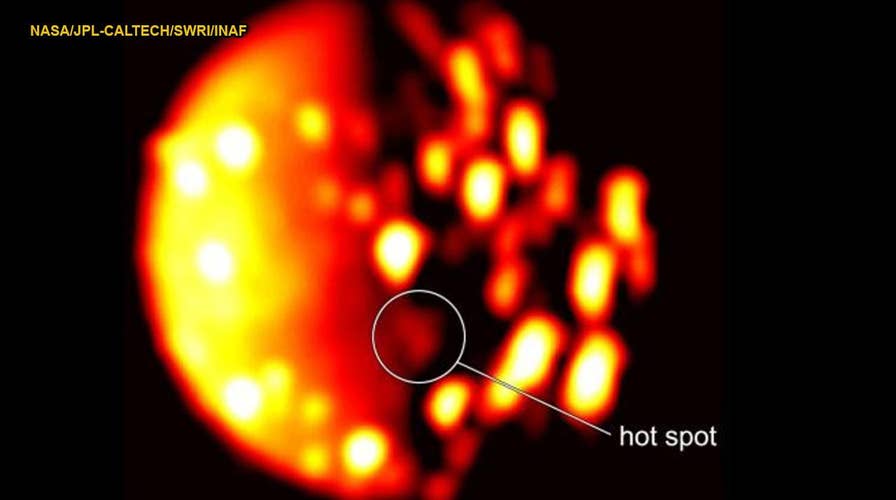NASA's Juno spacecraft captures shocking fiery images of Jupiter's moon Io
Jupiter's moon lo was once again partially illuminated with a fiery red glow in late December as a volcano erupted, spewing plumes of gases and lava. NASA's Juno spacecraft captured images of the volcanic plume during its 17th flyby of the planet. The gas giant's moon is considered the most active volcanic body in existence.
The "Christmas star," a rare celestial event that occurs when Jupiter and Saturn, the two largest planets in the Solar System, form what looks like a double planet, was one of the highlights of 2020.
True to form, 2021 promises to top that.
This weekend, Mercury will join the two gas giants in what is being dubbed a "triple conjunction," as the three planets will be within a couple of degrees from one another in the night sky.

Photo credit: NASA
CHRISTMAS STAR IS COMING: JUPITER AND SATURN ARE ABOUT TO DO SOMETHING NOT SEEN FOR NEARLY 800 YEARS
"From Friday evening to Monday evening, the planet Mercury will appear to pass first by Saturn and then by Jupiter as it shifts away from the horizon, visible each evening low in the west-southwest and setting before evening twilight ends," NASA wrote on its website.
According to Forbes, the three planets will be in the same two degrees of the sky in the Capricorn constellation.
EarthSky.org notes skywatchers may need binoculars to catch some of the planets, but the event can be seen by looking for Jupiter first, then spotting Saturn and Mercury. Jupiter will be the brightest of the trio.
JUPITER, SATURN SPOTTED OVER LEGENDARY BRONZE AGE STRUCTURE
The science website adds that it is best to "find an unobstructed horizon in the direction of sunset" to see these planets, starting stargazing no less than 45 minutes after sundown.
Unlike the "Christmas star," this triple conjunction of planets has happened recently, last occurring in October 2015. By comparison, Jupiter and Saturn form a double conjunction once every roughly 20 years, though the most recent event was the closest the two had been to each other since 1226 A.D.
CLICK HERE TO GET THE FOX NEWS APP
After this weekend, the next time the trio will form a triple conjunction is Feb. 13, 2021, just before Valentine's Day.
The next two triple conjunctions are set for April 20, 2026 (Mercury, Mars, Saturn) and June 16, 2028, when Mercury, Venus and Mars make up the event.





















